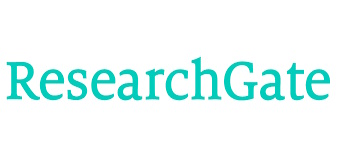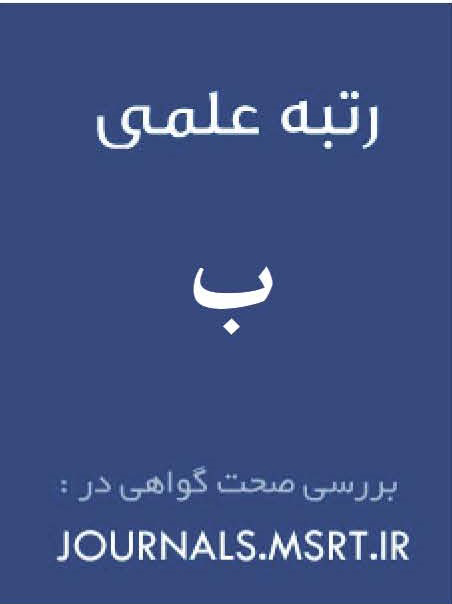Validation of the Alignment Model between Information Technology Strategies and Business Strategies from the Perspective of Secondary School Principals in Tabriz
Keywords:
Strategic alignment, Information technology, Business strategy, Human resource management, Information security, Education systemAbstract
This study aimed to design and validate a comprehensive model for strategic alignment between information technology (IT) and business strategies from the perspective of secondary school principals in Tabriz to identify key enabling and inhibiting factors and provide a localized framework for digital management in education. A mixed-methods design was employed. In the qualitative phase, 10 IT and education experts were selected through theoretical saturation sampling and interviewed using a semi-structured protocol. Data were analyzed through open, axial, and selective coding. In the quantitative phase, a researcher-developed questionnaire based on the qualitative findings and literature was distributed to all 250 secondary school principals in Tabriz. Reliability was assessed using Cronbach’s alpha and composite reliability, while convergent and discriminant validity were confirmed via AVE and the Fornell–Larcker criterion. Structural equation modeling and fit indices were used to validate the conceptual model. The proposed model demonstrated excellent fit (χ²/df=1.79, RMSEA=0.043, GFI=1, AGFI=0.89, NFI=1, GOF=0.911). Human resource management and information security had significant direct effects on IT–business strategic alignment (β=0.65 and β=0.72). Additionally, business strategies significantly predicted the development of human resource management (β=0.28) and information security (β=0.35). The validated model provides a robust and practical framework for educational managers and policymakers to integrate IT strategy with organizational objectives, enhancing strategic planning and supporting digital transformation in schools.
Downloads
References
Al-Okaily, A., Teoh, A. P., & Al-Okaily, M. (2023). Evaluation of data analytics-oriented business intelligence technology effectiveness: an enterprise-level analysis. Business Process Management Journal, 29(3), 777-800. https://doi.org/10.1108/BPMJ-10-2022-0546
Buchanan, W. (2024). Exploring Value Creation Through Strategic Partnership in Information Technology Companies: A Qualitative Study Touro University Worldwide].
Chen, A., & Roberts, N. (2024). Joint drivers of different shades of green IT/IS practices: a strategic cognition perspective. Information Technology & People, 37(3), 1103-1125. https://doi.org/10.1108/ITP-07-2022-0562
Deilami Azodi, A., Khodadad Hosseini, S. H., Kordnaeij, A., & Meshbaki Esfahani, A. (2020). Conceptualization and explanation of the adaptation model of the business model in the information and communication technology industry. Business Strategies, 33(17), 77-106. https://cs.shahed.ac.ir/article_2451.html?lang=en
Foroughi Kesemi, A., & Daneshjoo, P. (2024). The Role of Open Innovation Strategies and Company/Organization Performance in Market Information Management Capability with the Moderating Role of Technology as an Influential Factor. Scientific Journal of New Research Approaches in Management and Accounting, 8(29), 487-510. https://www.majournal.ir/index.php/ma/article/view/2699
Gandrita, D. M. (2023). Technology and family business: from conceptualization to implementation in strategic planning – a perspective article. Journal of Family Business Management, ahead-of-print(ahead-of-print). https://doi.org/10.1108/JFBM-07-2023-0105
Guntumadugu, V. K. (2025). Generative AI in Financial Services: A Strategic Framework for Digital Transformation. International Journal of Scientific Research in Computer Science Engineering and Information Technology, 11(1), 1553-1559. https://doi.org/10.32628/cseit251112145
Jabbarzadeh, G., & Niknam, M. (2022). The impact of alignment between business strategies, information technology, and marketing on firms' operational performance. Journal of Management Science Research, 4(11), 124-135. https://www.noormags.ir/view/en/articlepage/1972091/
Kalantari, F. (2024). Presenting and validating an educational justice model based on information and communication technology with a blended learning approach in education. Journal of Technology in Entrepreneurship and Strategic Management, 4(3). https://doi.org/10.61838/kman.jtesm.3.4.11
Mohammadi, A., Rezaei, S., & Nikzad, H. (2024). The Impact of Artificial Intelligence Technologies on Improving Strategic Decision-Making in Knowledge-Based Organizations: The Mediating Role of Organizational Innovation. Journal of Information Technology Management in Iran, 15(4), 245-270.
Parsakia, K., & Jafari, M. (2023). Strategies for Enhancing Customer Engagement Using Artificial Intelligence Technologies in Online Markets. Journal of Technology in Entrepreneurship and Strategic Management (JTESM), 2(1), 49-69. https://doi.org/10.61838/kman.jtesm.2.1.6
Pitoyo, B. S., Widyastuti, T., Ahmar, N., Daito, A., & Harnovinsah, H. (2023). Networking Analysis, Adoption of Accounting Information Technology, Dynamic Capabilities on Organizational Performance With Corporate Strategy As Moderating Variables. International Journal of Social Science, 3(2), 163-172. https://doi.org/10.53625/ijss.v3i2.6300
Safardoust, A., Pourqasem sostani, M., & Salami, R. (2023). Identifying strategic components affecting the position of small home appliance industry. Journal of Strategic Management Studies, 14(53), 1-24. https://doi.org/10.22034/smsj.2023.169392
Sedigh Pourmand, M., Hakkak Zadeh, M., & Manouchehrinejad, M. (2023). Designing a Strategic Decision-Making Model Based on Information and Communication Technology in the Physical Education Department of the Ministry of Education. Communication Management in Sports MediaVL - 11(1), 78-89. https://civilica.com/doc/1767625/
Shadbakhs, A. (2023). Examining the Impact of Implementing Sustainable Marketing Strategies on the Performance of Digital Businesses with the Mediating Role of Information Technology in the Real Estate Industry in Iran. Proceedings of the Fifth National Conference and Second International Conference on New Business Management Models in Unstable Conditions, Tehran.
Shahreki, J. (2024). Adopting Human Resource Information System and Work-Related Outcomes in Emerging Market SMEs: Unified Theory of Acceptance and Use of Technology. Cross Cultural & Strategic Management, 31(1), 116-142. https://doi.org/10.1108/ccsm-09-2022-0144
Son, I., & Kim, S. (2022). Supply Chain Management Strategy and Capital Structure of Global Information and Communications Technology Companies. Sustainability, 14(3), 1844. https://doi.org/10.3390/su14031844
Tang, C., Mao, S., Naumann, S. E., & Xing, Z. (2022). Improving student creativity through digital technology products: A literature review. Thinking Skills and Creativity, 44, 101032. https://doi.org/10.1016/j.tsc.2022.101032
Touriano, D., Sutrisno, S., Kuraesin, A. D., Santosa, S., & Almaududi Ausat, A. M. (2023). The Role of Information Technology in Improving the Efficiency and Effectiveness of Talent Management Processes. Jurnal Minfo Polgan, 12(1), 539-548. https://doi.org/10.33395/jmp.v12i1.12454
Yazdani, A., & Darbani, S. (2022). The Impact of Cloud Technology on Strategic Management and Organizational Flexibility. Journal of Technology in Entrepreneurship and Strategic Management, 1(1), 12-20. https://www.journaltesm.com/article_192386.html
Zhen, X., & Zhen, L. (2024). Accounting Information Systems and Strategic Performance: The Interplay of Digital Technology and Edge Computing Devices. Journal of Grid Computing, 22(1), 5. https://doi.org/10.1007/s10723-023-09720-8
Downloads
Published
Submitted
Revised
Accepted
Issue
Section
License
Copyright (c) 2025 Mohamadreza Kazemimehr (Author); Roghayeh Vahdat ; Maryam Sameri (Author)

This work is licensed under a Creative Commons Attribution-NonCommercial 4.0 International License.






